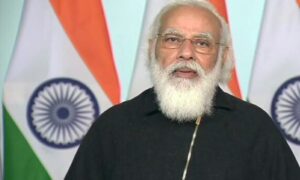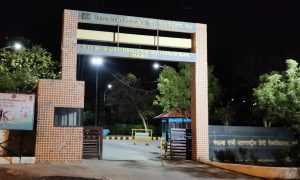Ayushman Bharat – Pradhan Manthri Jan Arogya Yojana (PMJAY), described by many as the largest social health insurance programme launched anywhere in the world, has been launched on 23rd September. Some have even suggested that the prime minister be nominated for the Nobel Prize for this historic initiative to transform the health care system of the world’s second largest populous country. The high expectations sought to be roused are unwarranted both by our past experience with insurance schemes as well as the confusions that plague the new scheme. It was included in the last central budget, almost as an afterthought, with a paltry allocation of Rs 2,000 crores and hardly any explanation of the details. The scheme has been finally launched by a government now at the fag end of its tenure with little time left to prove or disprove the tall claims made.
There has been a drift among the policy makers towards insurance-based health care systems, given our failure to provide universal health care through an effective network of public health institutions. This failure has forced more than 70 per cent of the people to depend upon the private sector whose high expenses have made proper health care unaffordable to most of them. The result is there for everyone to see – India’s health achievements continue to trail behind our Asian neighbours. The most important factor responsible for this dismal performance has been lack of adequate public investment. Total Government health expenditure (including the Centre and the States) is only 1.1 per cent of the GDP far below the WHO’s recommendation of 4 per cent. Thus, an overwhelming proportion of health expenditure is privately financed from direct out of the pocket spending by the patients.
It was in this background that the ‘Rashtriya Swasthya Bima Yojana’ was launched in 2008 by Manmohan Singh Government. It was targeted to cover the entire BPL population, guaranteeing inpatient medical care up to Rs 30,000. However, it had enrolled only 10 per cent of the population by 2011. Not only was the coverage poor but the benefit received by the insured has also been scanty. During the last one decade the insurance companies settled 120 lakh claims of which 53 lakhs have been from the State of Kerala. Thus, Kerala with a share of three per cent of the population accounts for 42 per cent of the claims in the country. It would appear that the insurance companies were the main beneficiaries of the public financed health insurance system. Kerala had carefully customised the RSBY scheme to ensure that the public health system in the State was not undermined by the insurance scheme. As a result, more than 80 per cent of the claims settled were in the public health system.
The RSBY enrolment in Kerala was 21.6 lakhs. An additional enrolment of 19.4 lakh of non BPL families was also made from the State Government’s funds. Besides, all these 41 lakh beneficiaries were also assured free additional treatment up to Rs 2 lakh in the public health system for selected procedures. Thus, the RSBY that existed in the State was a hybrid model of basic insurance of Rs 30,000 benefits and an add on of Rs 2 lakhs on the assurance model, the latter entirely based on the public health system. It may be noted that some other States had also modified RSBY in a similar manner.
Now, the Central government has launched AB-PMJAY displacing the existing RSBY programme. Just as in RSBY in the new scheme also the cost of the premium would be shared by the Centre and State in the ratio 60:40. In RSBY, the eligible premium celling was 1250 (including Rs 500 towards additional benefit of Rs 30,000 per senior citizens in the house hold). There has been no official announcement of the eligible premium celling in AB-PMJAY but from unofficial statements made in media discussions, it is Rs 1100 to be shared between Centre and State as 60:40. It means the Central share of AB-PMJAY is less than that of RSBY. According to NHA guidelines, the Central support would be limited to actual premium discovered through open tendering process on a maximum selling of the estimated premium decided by Government of India.
We do not have an actuarial data base to arrive at the probability of expected health episodes and its implication of cost of different treatments, however, the discussions with insurance companies indicate that the premium cost would be anything between Rs 5,000 and Rs 7,000 in Kerala. The Central share of this actual premium cost could only be Rs 660 (ie 60 per cent of Rs 1100). The number of beneficiaries eligible for enrolment in AB-PMJAY is only 18.5 lakhs. At any rate none of the 41 lakh beneficiaries of RSBY can be excluded. The premium burden of these additional beneficiaries would have to be entirely born by the State. Kerala does not mind spending an additional amount for health care. After all, with no prompting from the Central government, historically it has been allocating much higher resources to health sector than any State in India. But there are questions that have to be settled.
With 80-85 percentage share of the burden of the insurance scheme born by the State, in what sense is it a centrally sponsored programme? Is it not fair that there must be transparent deliberations on financing of the scheme? Shouldn’t there be sufficient scope for customising the scheme to a concrete condition of each State? States should have the right to customise Ayushman Bharat to their specific situations.
The high cost of the insurance without a corresponding increase in the overall health budget will result in a squeeze on the already meagre budgetary provisions for public health systems and their virtual neglect to elimination. The promises of 150000 health and wellness centres to provide free universal health care are empty without the backing of adequate budgetary support. It may also be noted that allocations for the health and social sectors has been squeezed in the recent Central Government budgets. In all likelihood a majority of the States are going to opt for a hybrid variety of insurance – assurance system, which in the absence of adequate investment in the secondary and tertiary public sector is going to subsidise the super speciality hospitals in the private sector. In the long run, there are the dangers of rising premium costs and the erosion of coverage. In short, what is being touted as the world’s largest social health insurance programme, like its predecessor would have much smaller coverage than the target, benefit insurance companies and private hospitals rather than the patients and would further undermine the public health system in the country.
One would have to wait a couple of years before a proper assessment can be made of the newly launched healthcare scheme. Meanwhile, Ayushman Bharat would provide sufficient fodder for delusional propaganda meant for the coming elections.



























 WhatsApp us
WhatsApp us
Pingback: british dragon primobolan
Pingback: axiolabs anabolic steroids
Pingback: How To Use Wealthy Affiliate 2020
Pingback: https://theplumbernearme.com.au/bendigo/sailors-gully/
Pingback: swiss watches replica buy watch with 60 discount
Pingback: is blazing trader a scam?
Pingback: blazingtraderapp.com
Pingback: Quality Engineering Services
Pingback: Intelligent automation
Pingback: CLA Legal
Pingback: tangerine online banking log-in
Pingback: replica watches
Pingback: acl board dimensions
Pingback: cats having fun
Pingback: hublot replica
Pingback: 트루모아
Pingback: xs vietlott
Pingback: canlı casino
Pingback: Bella_Aaliyah
Pingback: Sample Art Critique Essay
Pingback: Esport
Pingback: philly golden teacher
Pingback: golden teacher mushroom,
Pingback: thedatingadvisor.com/lovoo/
Pingback: lien
Pingback: เงินด่วนออนไลน์
Pingback: bullet journal template
Pingback: buy bergara arms guns
Pingback: shrooms chocolate bar dc
Pingback: roof skylight